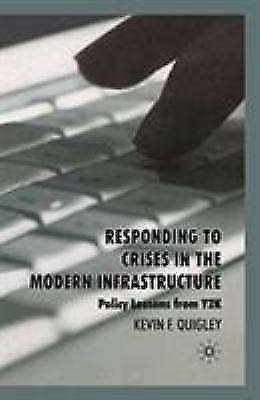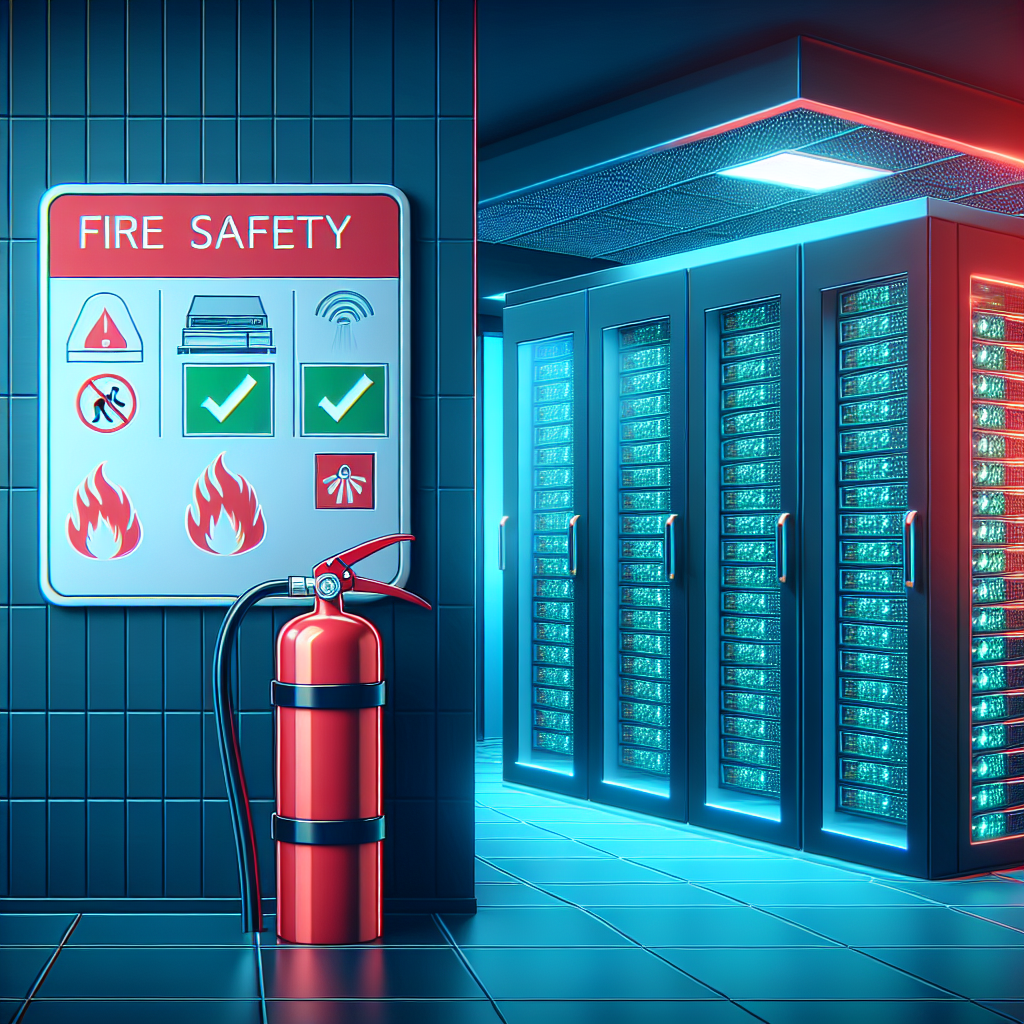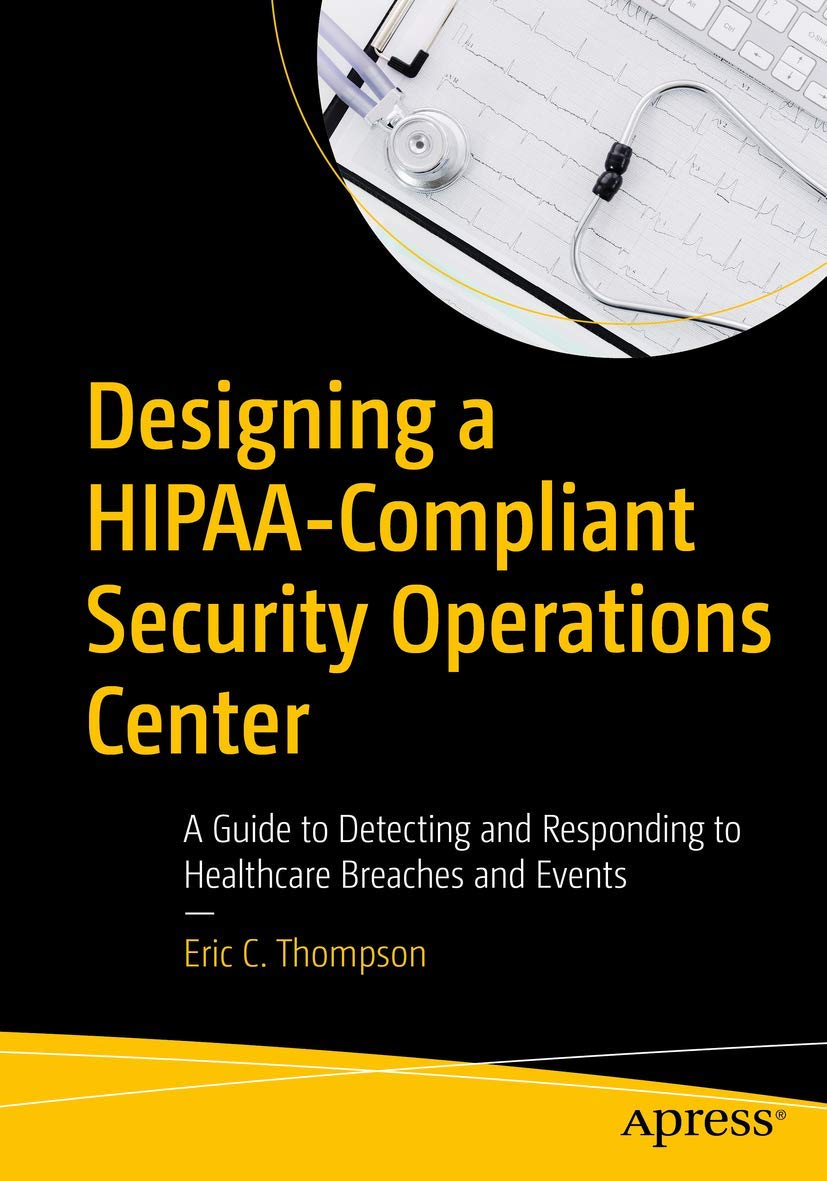Your cart is currently empty!
Tag: Responding
Apex Legends Devs Want To Be “More Agile With Responding To The Community”
“Our taxi driver was an ALGS fan, our server at the restaurant last night was an ALGS fan, and the bassist in a rock band we saw last night was an Apex fan, Bloodhound main,” says John Larson, Apex Legends’ live balance designer. Japan is Apex crazy, and Sapporo has become a hub for fans of the game, whether they’re attending the tournament or not. “Everyone we cross paths with, they see the Apex logo and they’re like, oh. Everyone is very passionate out here. It’s good to be here.”
Seeing the passion in person is a reminder of the global scale of Apex Legends esports, and Larson notes that it’s sometimes easy to forget that when you’re working from home, in your own little bubble, looking at the game with the most intense scrutiny.
“I consider myself lucky to be able to get here to witness it firsthand,” he says. “Apex is like our universal language out here. I can be talking with someone who doesn’t speak English and I don’t speak Japanese, but we have that commonality and we both recognise what it means and what it gives us.”
From Avid Player To Integral Developer
Larson has an interesting background, as he was not a qualified developer when he joined the Respawn team. He studied mechanical engineering but always knew he didn’t want to pursue a career in the industry as he preferred looking for more creative solutions. “Design is that marriage of technical and creative problem solving that I really like,” he tells me, explaining that he’s “not surprised” to have found himself in a development role thanks to the analytical eye he applies to any game he plays.
A fan of Respawn’s Titanfall games, Larson dove straight into Apex when it was released. His countless hours grinding got to the point that he thought he “might as well try to make some money off this.”
With a career as a pro over before it ever began, he spotted a tweet from former design director Jason McCord advertising a role in the company requiring someone with scripting skills and a high-level knowledge of the game. He applied, and Respawn found its new live balance designer. Larson utilised that high-level Apex knowledge to work his way up the ladder, to the point where he was pivotal in bringing the Legend Upgrade System to fruition in Season 20, a system which completely restructured the game, rebalanced the Legends, and changed how we play Apex Legends forever.
Apex Legends Might Be Getting A Next-Gen Upgrades As Season 12 Approaches
“That was my baby for the best part of a year,” he says. “Season 20 was a great testament to how the team came together to come up with this unified vision.” From the weapons and balance teams to the map designers, Larson says everyone worked as a cohesive unit to change the Apex Legends experience.
Fundamentally an RPG mechanic, the Legends Upgrade System allows players to pick buffs to their abilities as the game progresses. This progress is tied to your Evo Shield, which itself scales with the damage you dish out and (sometimes) passive abilities you utilise. There are also caches of Evo scattered across the map to give a boost to your shields and abilities all at once, which – from a design perspective – also force players to rotate across the map and engage other teams.
Respawn tried many different iterations of the system, with Larson explaining that originally the team had three upgrade choices for each level, but pulled that back to take a “quality over quantity” approach to provide punchier upgrades for each Legend.
“A lot of my time was spent thinking about those [skill] trees and creating compelling builds,” he explains. “I felt pretty motivated and qualified to do justice to different Legends with my experience of playing the game a lot and understanding the ins and outs of different Legends. It was just a great opportunity to dive deeper into that. Upgrades is a highlight of my career so far.”
As a keen player, ranked grinder, and balance designer, Larson is often at the heart of regulating the meta of the game. He’s not surprised by the defensive meta – it’s the result of the recent ‘Season of Support’ that was pushed to the game a few months ago – but the recent uptick in Ramparts we’ve seen across all three maps has raised an eyebrow.
“I can’t say that I personally expected it,” he says, before launching into a deep dive about the specifics of why Rampart has been so strong. “The accelerant hop-up – and baking that into some already-strong weapons – had an effect, because [of] the amount of Sheila uptime during fights; you secure a knock, you get that many more bullets reloaded back into the chamber.” This is in addition to the fact that she quite obviously counters Newcastle, of course.
“Let’s pack those upgrades full of power and get people to experiment on those.”
I must admit I hadn’t thought about how the hop-up interacted with Rampart’s abilities, or how it might have impacted her effectiveness in the game. I’m not sure many of us could honestly say we had. It’s moments like this, where Larson effortlessly breaks down precisely why Rampart is enjoying her time in the spotlight in such an incisive manner, that makes you realise just how deeply he understands this game.
Larson’s Legend Upgrade System obviously synergises with his role as a balance specialist, as the developers can now use these upgrades to tweak the strength of Legends instead of changing their core abilities. However, it doesn’t always land right with the players, as recent changes to Mirage and especially Loba have been controversial in the community.
“That’s a great example of cases where we were like, let’s pack those upgrades full of power and get people to experiment on those,” Larson explains. “I’m not going to say we’re not oblivious to the fact that Loba is now, you could argue, a better skirmisher than Pathfinder, but it’s the Season of Support and [we] really want to shake things up and get people off their mains.”
What To Expect From Apex Legends Season 24
However, Larson understands the community sentiment surrounding Loba’s upgraded abilities, and wants to reassure players that Respawn is trying to be more flexible in issuing hotfixes to problem areas of any update.
“We want to be more reactive with a lot of those things,” he explains, referencing how the team removed the gold knockdown shield this season due to how powerful it was in the hands of support Legends. “The support meta is not going to be around forever. I think Season 24 has its own suite of totally game shifting changes there too and we’re excited to be more agile with responding to the community and really pushing on shaking things up.”
So what shake-ups can we expect to see in the future? Larson thinks that Alter is currently being slept on at every level of the game, from public matches to the esports scene, but he urges players to keep their eyes on Ash now and in Season 24.
“Ash is one that I’m excited to for in [Season] 24 because we’ve been sitting on some Ash changes for a while,” he explains “The current Ash is compelling in this meta where once you get a knock you really have to capitalise on that; both with the tether to secure someone and then Ult in and finish up the fight. We’ve got some changes coming – if you’re sleeping on Ash now I don’t think you’ll be sleeping on her for much longer.”

Next
The Esports Player Who Moved 8,000 Miles To Compete
Guild Esports’ Phony moved from the US to Thailand to secure a spot at the Apex Legends Global Series Championship.
In a recent interview, the developers of Apex Legends expressed their desire to be “more agile with responding to the community.” With the rapid growth and ever-changing landscape of the battle royale game, the team at Respawn Entertainment understands the importance of listening to player feedback and making quick adjustments to meet the needs of the community.“We want to be more in tune with what our players are experiencing and feeling in the game,” said lead designer, Drew McCoy. “We know that communication is key, and we want to be more proactive in addressing issues and implementing changes based on player feedback.”
The developers have already made strides in improving communication with the community, including regular updates on social media and forums, as well as implementing a feedback system directly within the game. They are also working on streamlining their internal processes to allow for quicker turnaround on addressing player concerns and implementing new features.
“We want to show our players that we are listening and that we care about their experience with Apex Legends,” said McCoy. “Our goal is to create a game that is fun, engaging, and constantly evolving based on the feedback we receive from our community.”
Overall, the developers of Apex Legends are committed to being more agile and responsive to the needs and desires of their players. With a focus on communication and community engagement, they are dedicated to making the game the best it can be for all who enjoy playing it.
Tags:
Apex Legends, Respawn Entertainment, community feedback, game development, agile development, community engagement, Apex Legends updates, gaming news
#Apex #Legends #Devs #Agile #Responding #CommunityHow United, Southwest are responding to Houston’s winter weather
- Winter weather forced the closure of Houston’s two main airports, causing numerous flight cancellations, primarily impacting United Airlines and Southwest Airlines.
- Airlines proactively canceled flights ahead of the storm, anticipating operational disruptions and hazardous road conditions.
- The effectiveness of these preparations will depend on the speed of airfield and road clearance once the weather improves.
Houston’s two main airports remained closed for winter weather on Tuesday, leading to hundreds of canceled flights.
George Bush Intercontinental and William P. Hobby closed at midnight Tuesday.
United Airlines and Southwest Airlines both have major operations in Houston. Together with United’s regional partners, they were among the airlines most heavily affected by the Gulf Coast storm.
For passengers, however, there was some warning and increased flexibility to alter their plans.
Both airlines canceled most of the affected flights in advance, which should (hopefully) mean a smoother recovery once the storm clears.
Need a break? Play the USA TODAY Daily Crossword Puzzle.
Why cancel flights in advance?
Airlines often cancel flights in advance of severe weather.
According to former airline executive officer Robert W. Mann, Jr., it’s because airlines typically have a good idea of how a storm will affect their operations.
“Airlines anticipate the arrival and departure rates at the airport involved would not support their full schedule, so they prune back the schedule to the rate the (Federal Aviation Administration) can support based on weather and wind conditions.” Mann, president of R. W. Mann and Company, an independent airline consultancy, told USA TODAY.
Houston’s airport authority said it was closing its facilities due to hazardous road conditions in the city, and Mann said that can be a big part of airlines’ decisions to cancel flights, too.
“If it’s a storm where their customers or crew members cannot get to the airport to either fly or be served, that’s a reason to cut back the number of flights also,” he said. “You just can’t operate a full schedule under those circumstances.”
Houston’s George Bush Intercontinental is a major hub for United Airlines, so flight cancellations there could affect flights across the country on United. Southwest also has a big operation at William P. Hobby Airport in Houston, and although its not technically a hub, because Southwest operates on a point-to-point model, its closure still could have a big impact on the airline’s overall schedule today.
Gulf storm flight cancellations:What are your rights if your flight is delayed or canceled?
What passengers should expect now
It remains to be seen if Southwest and United’s preparations paid off, and how quickly the airports can clear things out.
“It’ll really depend on what happens on the airfield and on the roads surrounding Houston,” Mann said. “These are not cities and airports that are generally equipped to deal with five or six inches of snow, maybe not even one or two inches.”
Still, if the airline and airports’ pre-planning worked, things should get back on track pretty quickly once the weather clears.
“It’s a good test of planning and preparation, both from a snow-moving standpoint and from a deicing standpoint,” Mann said.
Zach Wichter is a travel reporter and writes the Cruising Altitude column for USA TODAY. He is based in New York and you can reach him at zwichter@usatoday.com.
As winter weather continues to wreak havoc in Houston, two major airlines, United and Southwest, are stepping up to assist affected passengers.United Airlines has announced that they will be waiving change fees for customers traveling to, from, or through Houston’s George Bush Intercontinental Airport (IAH) and William P. Hobby Airport (HOU) between February 13th and 17th. This will allow passengers to rebook their flights without incurring any additional costs.
In addition, United is also working to accommodate customers who may be stranded at the airport by providing cots and blankets for those who are unable to secure a hotel room due to the inclement weather.
Southwest Airlines is also taking proactive measures to help passengers impacted by the winter storm. The airline has canceled multiple flights to and from Houston in order to ensure the safety of their passengers and crew members. Southwest is offering flexible rebooking options for affected travelers and has implemented a travel advisory for those flying in and out of Houston.
Both United and Southwest are closely monitoring the situation and are committed to providing support to their customers during this challenging time. Passengers are encouraged to check their flight status and contact their respective airlines for the most up-to-date information on their travel plans.
Tags:
- United Airlines
- Southwest Airlines
- Houston winter weather
- United response to weather
- Southwest response to weather
- Winter weather travel updates
- Flight delays and cancellations
- Winter storm in Houston
- Travel disruptions in Houston
- How airlines are handling winter weather
#United #Southwest #responding #Houstons #winter #weather
Firefighters battle multiple blazes in Los Angeles County, with Chico State responding to impacted students | News
CHICO, Calif. – Firefighters battled early Thursday to control a series of major fires sweeping across Los Angeles County, including massive blazes in Pacific Palisades and Altadena.
Officials say the fires have already claimed the lives of five people, destroyed homes and forced thousands of residents from their properties. Communities from the Pacific Coast to Pasadena have been ravaged, while evacuees fled in panic as flames raced through neighborhoods.
Ferocious winds that have been fanning the flames and complicating evacuations have begun to subside, providing a glimmer of hope for first responders. Firefighters now have the opportunity to make more progress in containing the fires, though the situation remains volatile. As of Thursday morning, CAL FIRE reported the following statistics:
- Palisades Fire: 17,234 acres
- Eaton Fire: 10,600 acres
- Hurst Fire: 671 acres
- Lidia Fire: 348 acres
- Sunset Fire: 43 acres
As the fires continue to rage, Chico State is offering support to its students and staff who have ties to the Los Angeles area. The university is home to more than 1,000 students from LA County, many of whom have family and friends impacted by the devastation.
“We are extremely concerned and devastated by the destruction these fires have caused,” Chico State said in a statement. “We currently have more than 1,000 students who hail from LA County. Beyond that, many students and employees have family or close friends in the area who have been affected.”
Although the university is currently between semesters and students are not traditionally traveling back to campus this weekend, Chico State plans to closely monitor the situation as students return next week. “We want them to prioritize the well-being of themselves and their loved ones,” the statement continued. “We will work with students to provide resources and assistance as the semester gets started.”
Firefighters in Los Angeles County are currently battling multiple blazes that have ravaged acres of land and threatened communities. The wildfires have forced evacuations and caused widespread destruction, with firefighters working around the clock to contain the flames.In response to the wildfires, Chico State University has activated its emergency response team to assist students who have been impacted by the fires. The university is providing support and resources to those affected, including temporary housing and other forms of assistance.
As the fires continue to rage, residents in the affected areas are urged to stay vigilant and follow evacuation orders to ensure their safety. Our thoughts are with those who have been affected by these devastating wildfires, and we are grateful for the brave firefighters who are working tirelessly to protect our communities.
Tags:
Firefighters, multiple blazes, Los Angeles County, Chico State, impacted students, wildfires, emergency response, California wildfires, firefighting efforts, disaster relief, news updates
#Firefighters #battle #multiple #blazes #Los #Angeles #County #Chico #State #responding #impacted #students #News
Responding to Crises in the Modern Infrastructure : Policy Lessons from Y2k, …

Responding to Crises in the Modern Infrastructure : Policy Lessons from Y2k, …
Price :102.38– 65.80
Ends on : N/A
View on eBay
and COVID-19In times of crisis, our infrastructure and systems are put to the test. From the Y2k scare to the ongoing COVID-19 pandemic, we have seen how important it is for governments and organizations to be prepared and responsive to unforeseen challenges.
The Y2k scare, also known as the Millennium Bug, was a computer coding issue that threatened to disrupt systems worldwide as the year 2000 approached. Thanks to proactive measures taken by governments and businesses, the potential disaster was averted. This crisis taught us the importance of thorough planning, communication, and collaboration across sectors.
Fast forward to the present day, and we are facing another global crisis in the form of the COVID-19 pandemic. This unprecedented event has exposed weaknesses in our healthcare, economic, and social systems. It has highlighted the need for robust infrastructure, flexible policies, and rapid response capabilities.
As we navigate through these challenging times, it is crucial that we learn from past crises and apply those lessons to our current situation. We must invest in resilient infrastructure, update outdated policies, and prioritize the well-being of our communities.
By taking a proactive approach and working together, we can overcome any crisis that comes our way. Let’s use the lessons learned from Y2k and COVID-19 to build a stronger, more resilient future for all.
#Responding #Crises #Modern #Infrastructure #Policy #Lessons #Y2k, IT Infrastructure Management
Emergency Data Center Repair: Responding Quickly to Minimize Impact on Operations
Data centers are the backbone of many businesses, housing critical information and systems that are essential for day-to-day operations. When a data center experiences a malfunction or outage, it can have serious consequences for the organization, including loss of productivity, revenue, and customer trust. That’s why it’s crucial for businesses to have a plan in place for emergency data center repair, so they can respond quickly and minimize the impact on their operations.One of the key aspects of emergency data center repair is the need for a rapid response. When a data center goes down, every minute counts, and the longer the outage lasts, the more damage it can cause. That’s why it’s important for businesses to have a team of experienced technicians on call 24/7 who can quickly assess the situation, identify the root cause of the problem, and implement a solution as soon as possible.
In addition to having a rapid response team in place, businesses also need to have a comprehensive plan for emergency data center repair. This plan should outline the steps that need to be taken in the event of a data center outage, including who to contact, what equipment and resources are needed, and how to communicate with stakeholders and customers about the situation. By having a clear plan in place, businesses can ensure that everyone knows what to do in an emergency and can work together effectively to resolve the issue.
Another important aspect of emergency data center repair is the need for preventive maintenance. By regularly inspecting and maintaining data center equipment, businesses can identify and address potential issues before they escalate into a major problem. This can help to prevent unexpected outages and minimize the risk of disruption to operations.
Overall, emergency data center repair is a critical aspect of business continuity planning. By responding quickly to data center outages and minimizing the impact on operations, businesses can ensure that they are able to continue serving their customers and maintaining their competitive edge. By having a rapid response team, a comprehensive plan, and a focus on preventive maintenance, businesses can be better prepared to handle any emergencies that may arise in their data centers.

Responding to Crisis: How to Implement a Data Center Business Continuity Plan
In today’s fast-paced and technology-driven world, data centers play a crucial role in ensuring the smooth operation of businesses. These facilities house critical data and applications that are essential for the day-to-day operations of organizations. However, data centers are not immune to crises such as natural disasters, cyberattacks, or system failures. In times of crisis, it is imperative for businesses to have a well-thought-out business continuity plan in place to ensure minimal disruption to operations.Implementing a data center business continuity plan is essential for organizations to respond effectively to crises and maintain business continuity. Here are some key steps to consider when implementing a data center business continuity plan:
1. Conduct a risk assessment: The first step in developing a data center business continuity plan is to conduct a comprehensive risk assessment. This involves identifying potential threats and vulnerabilities that could impact the data center, such as natural disasters, cyberattacks, or power outages. By understanding the risks, organizations can develop strategies to mitigate them and ensure the continuity of operations.
2. Define critical systems and data: It is important to identify the critical systems and data that are essential for business operations. This includes identifying key applications, databases, and infrastructure components that need to be prioritized in the event of a crisis. By defining critical systems and data, organizations can develop strategies to ensure their availability and integrity during a crisis.
3. Develop a business continuity plan: Once the risks have been assessed and critical systems and data have been identified, organizations can develop a business continuity plan. This plan should outline the steps to be taken in the event of a crisis, including communication protocols, backup and recovery procedures, and alternative data center arrangements. The plan should be regularly reviewed and updated to ensure its effectiveness in responding to crises.
4. Test the plan: It is essential to test the business continuity plan regularly to ensure its effectiveness in responding to crises. This involves conducting simulation exercises and drills to identify any gaps or weaknesses in the plan. By testing the plan, organizations can fine-tune their response strategies and ensure that they are prepared to respond effectively to any crisis.
5. Implement monitoring and alerting systems: To ensure the timely detection of crises, organizations should implement monitoring and alerting systems in their data center. These systems can help identify potential issues and trigger alerts to key personnel, enabling them to respond quickly and minimize the impact of the crisis on business operations.
In conclusion, implementing a data center business continuity plan is essential for organizations to respond effectively to crises and maintain business continuity. By conducting a risk assessment, defining critical systems and data, developing a business continuity plan, testing the plan, and implementing monitoring and alerting systems, organizations can ensure that they are prepared to respond effectively to any crisis that may arise. By taking proactive steps to implement a business continuity plan, organizations can minimize the impact of crises on their operations and ensure the continuity of their business.

Fire Safety in the Data Center: Preventing and Responding to Potential Threats
Data centers are critical hubs for storing and processing vast amounts of information for businesses and organizations. With the increasing reliance on technology and data storage, it is essential to prioritize fire safety in data centers to prevent potential threats and ensure the safety of employees and equipment.Preventing fires in data centers starts with implementing proper fire safety measures and protocols. One of the most important steps is to regularly inspect and maintain electrical systems and equipment. Overloaded circuits, faulty wiring, and overheating equipment are common causes of fires in data centers. By conducting routine inspections and addressing any issues promptly, the risk of a fire breaking out can be significantly reduced.
Additionally, it is crucial to properly store and handle flammable materials in data centers. This includes ensuring that combustible materials are kept away from electrical equipment and that proper storage procedures are followed to prevent accidental ignition.
Furthermore, installing and maintaining fire suppression systems is essential for quickly extinguishing fires in data centers. Automatic sprinkler systems, clean agent systems, and fire extinguishers should be strategically placed throughout the facility to provide rapid response in the event of a fire.
In addition to prevention measures, it is equally important to have a comprehensive fire response plan in place. This plan should outline evacuation procedures, communication protocols, and emergency contacts to ensure a coordinated and effective response in the event of a fire.
Regular training and drills should be conducted to familiarize employees with the fire response plan and ensure that everyone knows their roles and responsibilities in the event of an emergency. This will help to minimize confusion and ensure a swift and organized response to any fire incidents.
In conclusion, fire safety in data centers is a critical aspect of maintaining a safe and secure working environment. By implementing proper prevention measures, maintaining fire suppression systems, and having a comprehensive fire response plan in place, businesses can effectively mitigate the risks associated with potential fire threats in data centers. Prioritizing fire safety in data centers is essential to protect employees, equipment, and valuable data assets.

Maximizing Uptime: Strategies for Preventing and Responding to Data Center Downtime
Data centers are the heart of any organization’s IT infrastructure, serving as the central hub for storing and processing critical data. With the increasing reliance on technology in today’s business world, downtime can have devastating effects on a company’s operations, leading to lost revenue, damaged reputation, and decreased productivity. In order to prevent and respond effectively to data center downtime, organizations must implement strategies to maximize uptime and ensure uninterrupted access to their systems.One of the key strategies for preventing data center downtime is implementing a robust maintenance and monitoring program. Regularly scheduled maintenance checks can help identify potential issues before they escalate into major problems, allowing IT teams to address them proactively. Monitoring tools can also provide real-time insights into the performance of the data center, enabling quick detection of any anomalies or failures.
Another important aspect of maximizing uptime is implementing redundancy and failover mechanisms. Redundant systems and components, such as backup power supplies, cooling systems, and network connections, can help ensure continuity of operations in the event of a hardware failure or other unforeseen event. Failover mechanisms, such as load balancing and automatic failover, can also help redirect traffic to alternative resources in case of a failure, minimizing the impact on users.
In addition to proactive measures, organizations must also have a comprehensive response plan in place to effectively address data center downtime when it occurs. This includes having clear communication protocols in place to notify relevant stakeholders, as well as a designated team of IT professionals who are trained to respond quickly and efficiently to incidents. Regularly testing and updating the response plan is also crucial to ensure its effectiveness in a real-world scenario.
Furthermore, organizations should consider investing in disaster recovery and business continuity solutions to mitigate the impact of data center downtime. These solutions can help organizations quickly recover data and systems in the event of a disaster, minimizing downtime and ensuring business continuity.
In conclusion, maximizing uptime in a data center requires a combination of proactive measures, such as maintenance and monitoring, as well as reactive strategies, such as redundancy and failover mechanisms. By implementing these strategies and having a comprehensive response plan in place, organizations can minimize the risk of downtime and ensure uninterrupted access to their critical systems. Ultimately, investing in uptime maximization can help organizations protect their revenue, reputation, and productivity in an increasingly interconnected and technology-dependent world.

Collection Management for Youth: Responding to the Needs of Learners
Price:$43.00– $40.98
(as of Nov 23,2024 23:54:29 UTC – Details)
Publisher : ALA Editions (January 31, 2005)
Language : English
Paperback : 120 pages
ISBN-10 : 0838908942
ISBN-13 : 978-0838908945
Item Weight : 10.4 ounces
Dimensions : 8.4 x 0.28 x 10.84 inches
As library professionals, it is crucial for us to continually assess and meet the needs of our youth patrons. One key aspect of this is through effective collection management. By understanding the interests, preferences, and developmental needs of our young learners, we can curate a collection that is engaging, diverse, and educational.Here are some strategies for effective collection management for youth:
1. Conduct a needs assessment: Start by understanding the demographics and interests of the youth in your community. This can be done through surveys, focus groups, or conversations with teachers and parents. By knowing what your patrons are interested in, you can tailor your collection to meet their needs.
2. Stay current: Keep up-to-date with the latest trends in children’s and young adult literature. This includes new releases, popular series, and diverse voices. Regularly review your collection to ensure it reflects a wide range of genres, authors, and perspectives.
3. Collaborate with educators: Work closely with teachers and school librarians to align your collection with the curriculum and learning objectives. This can help support students’ academic success and promote a love of reading.
4. Provide a variety of formats: Offer a mix of print books, e-books, audiobooks, and other media formats to cater to different learning styles and preferences. Consider providing resources in multiple languages to serve a diverse population.
5. Promote literacy and lifelong learning: Create displays, booklists, and reading programs that encourage reading for pleasure and learning. Consider hosting author visits, book clubs, and other events that engage young learners and foster a sense of community.
By responding to the needs of our youth patrons through thoughtful collection management, we can create a welcoming and enriching library environment that supports their growth and development. Let’s continue to prioritize the needs of our young learners and provide them with the resources they need to thrive.
#Collection #Management #Youth #Responding #Learners
Designing a HIPAA-Compliant Security Operations Center: A Guide to Detecting and Responding to Healthcare Breaches and Events
Price:$54.99– $39.63
(as of Nov 19,2024 15:50:31 UTC – Details)
Publisher : Apress; 1st ed. edition (February 26, 2020)
Language : English
Paperback : 249 pages
ISBN-10 : 1484256077
ISBN-13 : 978-1484256077
Item Weight : 15.7 ounces
Dimensions : 7.01 x 0.57 x 10 inches
Designing a HIPAA-Compliant Security Operations Center: A Guide to Detecting and Responding to Healthcare Breaches and EventsHealthcare organizations are increasingly becoming targets for cyberattacks, with patient data being one of the most valuable assets for hackers. In order to protect this sensitive information and comply with HIPAA regulations, healthcare providers must establish a robust Security Operations Center (SOC) to monitor, detect, and respond to security incidents.
Here are some key steps to designing a HIPAA-compliant SOC for healthcare organizations:
1. Understand HIPAA requirements: Familiarize yourself with the HIPAA Security Rule, which outlines the requirements for protecting electronic protected health information (ePHI). Ensure that your SOC design aligns with these regulations to avoid costly penalties and breaches.
2. Establish clear policies and procedures: Develop comprehensive policies and procedures for incident detection, response, and reporting. Ensure that all staff members are trained on these protocols to ensure a unified and effective response to security incidents.
3. Implement advanced monitoring tools: Invest in advanced security monitoring tools such as SIEM (Security Information and Event Management) systems, intrusion detection systems, and endpoint detection and response solutions. These tools can help detect and alert SOC analysts to potential security threats in real-time.
4. Conduct regular security assessments: Regularly assess the security posture of your organization through penetration testing, vulnerability assessments, and security audits. Identify and remediate any weaknesses in your security infrastructure to prevent potential breaches.
5. Establish incident response plans: Develop detailed incident response plans that outline the steps to be taken in the event of a security breach. Ensure that these plans are regularly tested and updated to address evolving threats and vulnerabilities.
By following these steps and designing a HIPAA-compliant SOC, healthcare organizations can better protect patient data and mitigate the risks of security breaches. Prioritizing security and compliance can help healthcare providers build trust with patients and maintain their reputation in an increasingly digital world.
#Designing #HIPAACompliant #Security #Operations #Center #Guide #Detecting #Responding #Healthcare #Breaches #Events






